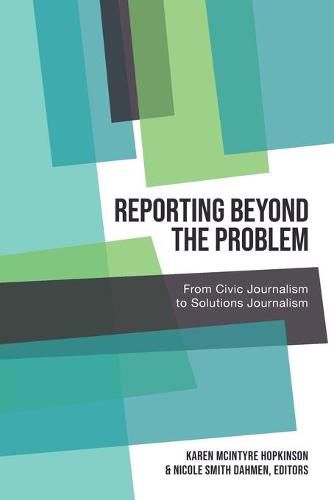Readings Newsletter
Become a Readings Member to make your shopping experience even easier.
Sign in or sign up for free!
You’re not far away from qualifying for FREE standard shipping within Australia
You’ve qualified for FREE standard shipping within Australia
The cart is loading…






This title is printed to order. This book may have been self-published. If so, we cannot guarantee the quality of the content. In the main most books will have gone through the editing process however some may not. We therefore suggest that you be aware of this before ordering this book. If in doubt check either the author or publisher’s details as we are unable to accept any returns unless they are faulty. Please contact us if you have any questions.
Americans say that reading, watching, or listening to the news is a leading cause of stress. Of course journalists, as watchdogs and public informants, must disseminate information that is inherently negative, but experts argue that the news media’s emphasis on the problem has had a negative effect on the public, the press itself, and democracy. At the same time, the past sixty years have seen a rise of journalistic practices that purport to cover the news beyond the typical problem-based narrative. These genres of journalistic reporting are not positive news or fluff reporting: They are rigorous reporting philosophies and practices that share a common goal-reporting beyond the problem-based narrative, thereby exemplifying a commitment to the social responsibility theory of the press, which asserts that journalists have a duty to consider society’s best interests. However, there is little academic or professional understanding of these journalistic approaches. As such, this book provides an in-depth examination of socially-responsible news reporting practices, such as constructive journalism, solutions journalism, and peace journalism. Each chapter focuses on one reporting form, defining it and detailing its evolution and status among scholars and practitioners, as well as discussing its known effects and future direction. This edited volume is the first academic book published on these forms of reporting in the United States. It provides a comprehensive resource that explores the theoretical underpinnings of these journalistic genres that grounds these approaches and allows for a coherent line of research to follow as these approaches evolve.
$9.00 standard shipping within Australia
FREE standard shipping within Australia for orders over $100.00
Express & International shipping calculated at checkout
This title is printed to order. This book may have been self-published. If so, we cannot guarantee the quality of the content. In the main most books will have gone through the editing process however some may not. We therefore suggest that you be aware of this before ordering this book. If in doubt check either the author or publisher’s details as we are unable to accept any returns unless they are faulty. Please contact us if you have any questions.
Americans say that reading, watching, or listening to the news is a leading cause of stress. Of course journalists, as watchdogs and public informants, must disseminate information that is inherently negative, but experts argue that the news media’s emphasis on the problem has had a negative effect on the public, the press itself, and democracy. At the same time, the past sixty years have seen a rise of journalistic practices that purport to cover the news beyond the typical problem-based narrative. These genres of journalistic reporting are not positive news or fluff reporting: They are rigorous reporting philosophies and practices that share a common goal-reporting beyond the problem-based narrative, thereby exemplifying a commitment to the social responsibility theory of the press, which asserts that journalists have a duty to consider society’s best interests. However, there is little academic or professional understanding of these journalistic approaches. As such, this book provides an in-depth examination of socially-responsible news reporting practices, such as constructive journalism, solutions journalism, and peace journalism. Each chapter focuses on one reporting form, defining it and detailing its evolution and status among scholars and practitioners, as well as discussing its known effects and future direction. This edited volume is the first academic book published on these forms of reporting in the United States. It provides a comprehensive resource that explores the theoretical underpinnings of these journalistic genres that grounds these approaches and allows for a coherent line of research to follow as these approaches evolve.